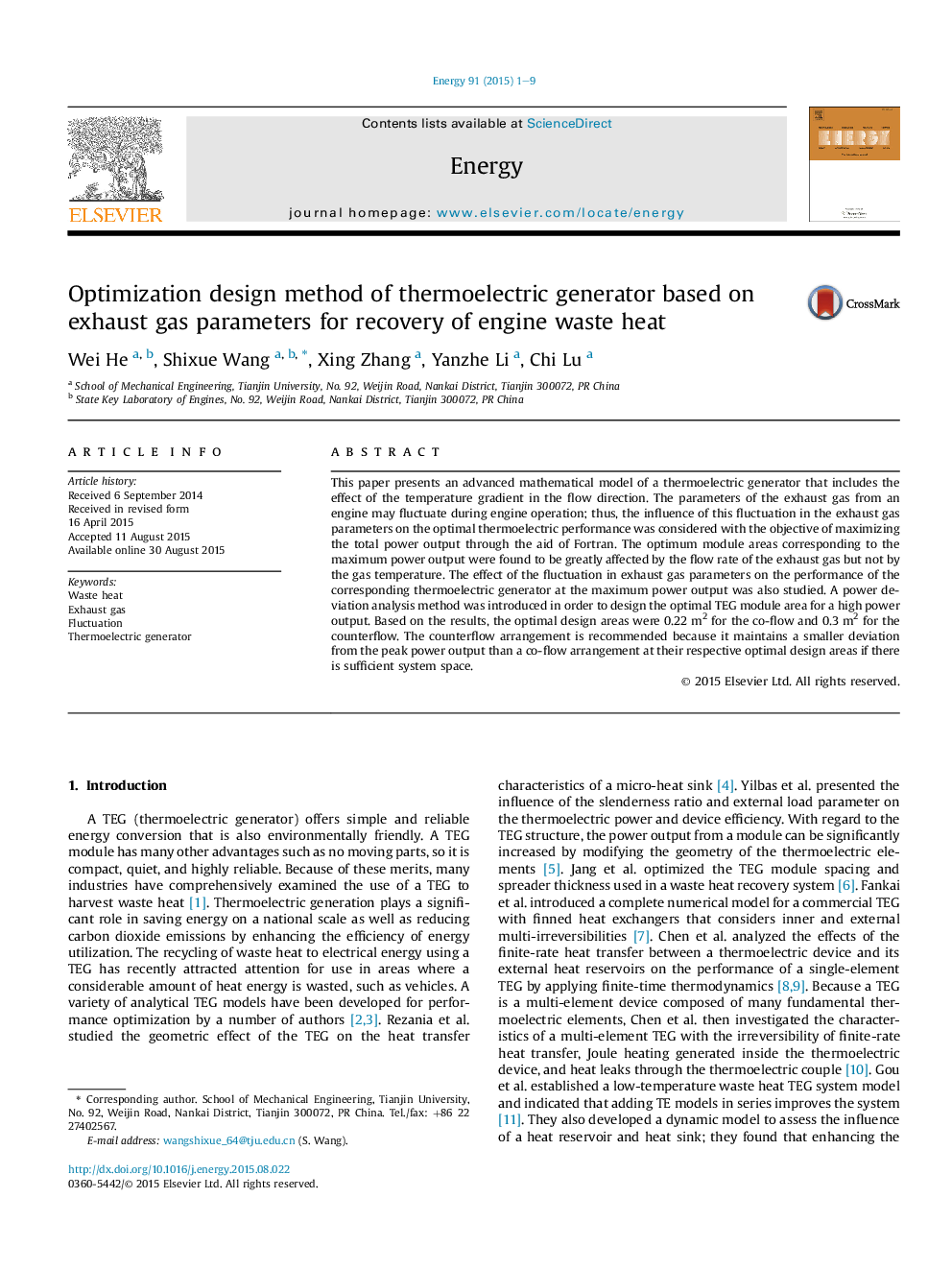| Article ID | Journal | Published Year | Pages | File Type |
|---|---|---|---|---|
| 1731466 | Energy | 2015 | 9 Pages |
•The temperature gradient in flow direction is considered in a thermoelectric system.•The effect of gas parameters on optimal thermoelectric performance is explored.•Design of the TEG is optimized for fluctuating exhaust gas parameters.•The counterflow arrangement is recommended to obtain a greater power output.
This paper presents an advanced mathematical model of a thermoelectric generator that includes the effect of the temperature gradient in the flow direction. The parameters of the exhaust gas from an engine may fluctuate during engine operation; thus, the influence of this fluctuation in the exhaust gas parameters on the optimal thermoelectric performance was considered with the objective of maximizing the total power output through the aid of Fortran. The optimum module areas corresponding to the maximum power output were found to be greatly affected by the flow rate of the exhaust gas but not by the gas temperature. The effect of the fluctuation in exhaust gas parameters on the performance of the corresponding thermoelectric generator at the maximum power output was also studied. A power deviation analysis method was introduced in order to design the optimal TEG module area for a high power output. Based on the results, the optimal design areas were 0.22 m2 for the co-flow and 0.3 m2 for the counterflow. The counterflow arrangement is recommended because it maintains a smaller deviation from the peak power output than a co-flow arrangement at their respective optimal design areas if there is sufficient system space.
